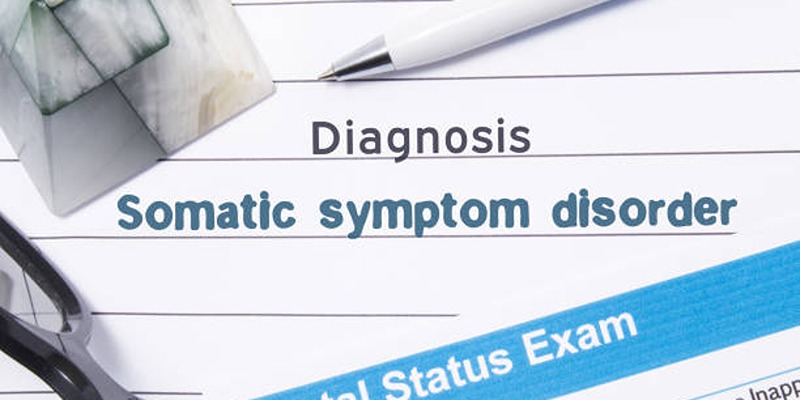Cerebral Palsy Demystified: A Step-by-Step Guide to Diagnosis and Care
Cerebral palsy (CP) is a medical condition which produces multiple neurological effects on postural control and movement together with motor function. The condition develops due to brain damage which happens before birth, during labor or shortly after birth. The resource serves as a realistic tool with compassionate direction for anyone who deals with cerebral palsy as an individual or caregiver or medical practitioner. People who receive proper knowledge and support systems will be able to pursue meaningful lives despite having cerebral palsy.
What is Cerebral Palsy?
Cerebral palsy exists as a single medical concept which combines different disorders causing body movement along with coordination and posture problems. As a neurological condition cerebral means brain dysfunction and palsy indicates muscle weakness along with movement limitations. Unusual brain development or damage to the brain prevents the proper control of movement and suitable posture maintenance.
Types of Cerebral Palsy:
Cerebral palsy comes in several forms, each with unique characteristics:
- Spastic Cerebral Palsy: The most common type, marked by muscle stiffness and challenges with movement.
- Dyskinetic Cerebral Palsy: Characterized by involuntary movements, such as twisting or repetitive motions.
- Ataxic Cerebral Palsy: Impacts balance and coordination, resulting in unsteady or shaky movements.
- Mixed Cerebral Palsy: A unique blend of symptoms from two or more types, making each case truly one of a kind.
Causes and Risk Factors:
Cerebral palsy can result from various factors, often linked to complications during childbirth, or early childhood development. Key causes include:
- Oxygen deprivation at birth: Prolonged labor, umbilical cord complications, or issues with the placenta can restrict oxygen supply to the baby’s brain, causing lasting damage.
- Premature birth or low birth weight: Babies born too early or underweight face higher risks of brain-related complications, making them more vulnerable.
- Genetic mutations or developmental abnormalities: Irregularities in brain development or genetic mutations can disrupt normal growth and lead to neurological disorders like cerebral palsy.
Recognizing these underlying causes is crucial for identifying risk factors and implementing preventative measures during delivery.
Diagnosing Cerebral Palsy:

Early diagnosis is essential for effectively managing cerebral palsy, but identifying the condition can be challenging since symptoms may not be immediately apparent after birth.
Key Signs and Symptoms:
Cerebral palsy often reveals itself through a range of indicators, typically becoming apparent during infancy or early childhood. These signs include:
- Delayed developmental milestones: Children may struggle to sit, crawl, or walk at the expected age, with noticeable delays in reaching key physical milestones.
- Abnormal muscle tone: This can appear as either excessive stiffness (spasticity) or unusual floppiness (hypotonia), affecting posture, movement, and overall mobility.
- Poor coordination and balance: Instability while sitting or walking can result in frequent stumbling or an unsteady gait.
- Difficulty with fine motor skills: Challenges with tasks such as grasping objects, holding utensils, or handling small items can interfere with everyday activities like eating and playing.
Parents and caregivers should monitor their child’s developmental progress closely and seek medical advice if they observe delays or unusual behaviors.
The Diagnostic Process:
Diagnosing cerebral palsy involves a thorough evaluation of a child’s physical and neurological development. This process typically includes:
- Developmental Monitoring: Tracking the child’s growth, motor skills, and progress over time.
- Neurological Examination: Assessing reflexes, muscle tone, posture, and movement patterns.
- Imaging Tests: Using MRI or CT scans to detect potential brain abnormalities.
- Laboratory Tests: Eliminating other conditions with similar symptoms.
A multidisciplinary team—comprising pediatricians, neurologists, and therapists—works collaboratively to ensure an accurate diagnosis and to guide next steps for care and treatment.
Treatment and Management:
Although cerebral palsy cannot be cured, a variety of treatments and therapies can effectively manage symptoms and enhance quality of life.
Medical Interventions:
- Medications: Prescribed muscle relaxants or pain relievers can help reduce spasticity and manage discomfort.
- Surgery: Surgical procedures may correct bone deformities or improve mobility and posture.
- Assistive Devices: Tools such as braces, wheelchairs, or communication aids promote greater independence and functionality.
Therapies:
- Physical Therapy: Aims to enhance strength, flexibility, coordination, and overall mobility.
- Occupational Therapy: Focuses on developing fine motor skills and improving the ability to perform daily tasks.
- Speech Therapy: Addresses challenges with communication and swallowing, fostering clearer speech and improved eating habits.
- Behavioral Therapy: Supports emotional well-being and social skills, helping individuals navigate personal and social relationships.
Lifestyle and Home Care:
Families play a vital role in supporting individuals with cerebral palsy by fostering an environment that nurtures both physical and emotional well-being. Here are some effective strategies to consider:
- Create an accessible home environment by installing ramps, widening doorways, and incorporating assistive devices. These modifications not only enhance mobility and independence but also provide a safe, supportive space for daily life.
- Encourage physical activity through options like swimming, stretching, or adapted sports to boost mobility, strengthen muscles, and improve overall health. Participation in group activities or community programs can also promote social interaction, combat loneliness, and foster a sense of belonging.
With the right combination of medical care, therapeutic interventions, and familial support, individuals with cerebral palsy can lead more empowered and fulfilling lives.
Support for Families:

Caring for a child with cerebral palsy can be overwhelming, but families don’t have to navigate this journey alone. A wealth of resources and support systems are available to provide guidance and assistance.
Educational Resources:
- Individualized Education Plans (IEPs): Customized learning programs designed to meet the unique needs of children with disabilities.
- Special Education Services: Dedicated schools and organizations offering tailored educational support to help children thrive.
Community Support:
- Support Groups: Opportunities to connect with other families who share similar experiences, creating a network of understanding and encouragement.
- Nonprofit Organizations: A source of valuable information, advocacy, and even financial assistance for families in need.
Emotional Well-being:
- Counseling: Professional guidance to help parents and caregivers navigate the emotional challenges of raising a child with cerebral palsy.
- Respite Care: Temporary relief services allowing caregivers time to rest, recharge, and prioritize their own well-being.
Families don’t have to face these challenges in isolation. By tapping into these resources, they can find the tools and support needed to create a fulfilling and balanced life for their loved ones.
Conclusion:
Cerebral palsy is a multifaceted condition, but with accurate diagnosis, effective treatment, and compassionate support, individuals with CP can live meaningful and fulfilling lives. Early intervention, tailored care plans, and a robust support network play vital roles in addressing the challenges associated with CP. By shedding light on this condition, we can equip families and caregivers with the tools to provide exceptional care while fostering a more inclusive and understanding society.












